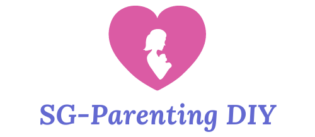After a long day of work, it feels so tiring and you just want to lay down and rest. But then it’s your baby’s feeding time again, so all your plans come to an abrupt halt. After feeding your baby, what is the next thing you do? You can’t go to bed before cleaning those bottles because bacteria will proliferate if they are not properly cleaned.
Whether you breastfeed or bottle feed your baby, it is crucial that the feeding apparatus and accessories should be clean. This is to ensure that there are no harmful microorganisms that might infect your baby or may cause unpleasant odors in the bottles.
How much time do you spend every day cleaning your baby’s bottles? I know this can be very tedious as there are many parts in a typical bottle that need to be cleaned thoroughly. We have here some tips on how to clean baby bottles effectively, efficiently, and fast.
The bottles of your baby need to be cleaned properly and efficiently. This is important because it can prevent your baby from being exposed to germs that can cause illness. It is also necessary for the hygiene and well-being of your little one.
However, cleaning the bottles is a daunting task for many parents. This is because some bottles have tiny crevices that make it hard to reach when cleaning. Moreover, some parts are not safe to put into the dishwasher or boiling water.
If you want to learn how to clean your baby’s bottles efficiently, here are the steps you need to follow:
Step 1: Wash Immediately After Feeding

It will be easier to clean the bottle if you wash it immediately after feeding your baby. The milk or formula in the bottle should be removed right away so it won’t dry up as this will make cleaning hard.
Swimming is the best workout for new mothers because it tones up all your muscles without putting any pressure on the joints. It will also help you to lose weight.Swimming is an excellent exercise for new moms because it uses all the major muscle groups, is easy on the joints and doesn’t put any strain on your back or abdominal muscles. You can try it 3-5 weeks after your delivery if you had a normal vaginal birth.
Step 2: Scrape Off The Food Residue

You should scrape off any food residue inside the bottle using a straight edge spatula. You can do this quickly with hot water running over the inside of the bottle.
Step 3.Brush the Bottle and Nipple

If you don’t have a dishwasher, use a bottle brush and cleanser designed for baby bottles.
Step 4: Rinse With Hot Water

Rinse the bottle with hot water before washing it with soap and water. Sterilize bottles every few weeks by placing them in boiling water for five minutes.
If you are using powdered formula, mix only what your baby will drink within an hour to prevent bacteria from forming in leftover formula (if you refrigerate unused formula, it may still be safe for up to 24 hours).
Step 5: Load the bottles

Load the bottles upright in the dishwasher basket, with nipples facing down, so they don’t get filled with water during the wash cycle (this will make it easier to dry them later).
Step 6. Dry it with clean towel

After cleaning, all parts should be thoroughly rinsed and dried with a clean cloth or air-dried upside down on a drying rack (never leave them sitting in water). Use clean bottles each day and wash used ones within 24 hours to prevent bacteria from growing inside them.
